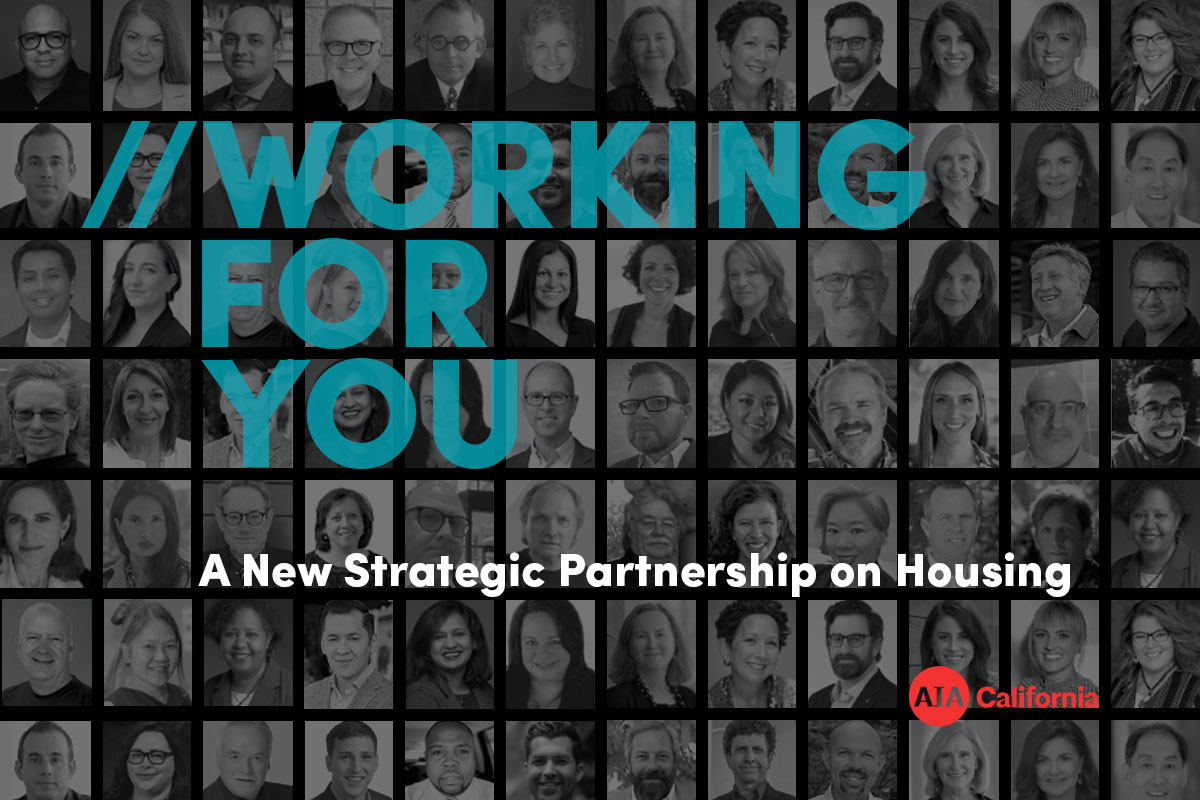
Greetings from the AIA California Office,
AIA California has recently been asked to partner with the Terner Center–to formulate bold strategies to reduce barriers and develop statewide policy recommendations that serve as a basis to increase housing creation. I’m thrilled to be able to break the news about it to you.
This invitation to join a widely respected organization is significant on multiple levels.
One, given the Terner Center’s stature as a preeminent California think tank, that advises a of stakeholders including state legislators, local elected officials, federal regulators, and government agencies, private sector leaders and innovators, and civic leaders, it solidifies AIA California members’ stature as trusted experts.
This type of partnership is one of the many reasons I believe in AIA California. Working together, we can gain the ear of key California decision makers.
That’s a benefit from an organizational point of view. But, of course, we’ve reached this juncture because so many members are deeply committed to the issue, daily make innovative contributions to housing stock, and believe in the embedding of core values in its realization.
The challenges in delivering housing have been an on-going topic of discussion for decades. As a state, we’ve reached a tipping point where the dialogue can no longer be solely focused on insufficient construction counts, but rather how can we create equitable opportunities for all, adapt existing building stock to create sustainable solutions, and address financial barriers to reach or enhance services for those in need.
Creating equitable access to housing while avoiding gentrification without stifling neighborhood improvement; diversifying opportunities for wealth building at all economic scales; expanding access to land ownership for more people; identifying misguided regulatory policies in need of reform; advancing effective zoning policies; addressing challenges associated with accessing decision makers; developing and nurturing key partnerships or alliances; understanding the underlying economics of housing production; highlighting housing within greater stewardship of the built environment; promoting the importance of design in holistic housing solutions; nurturing design thinking and typological innovation – these are merely some of the underlying forces.
And while many have identified the barriers, these conversations have remained at more conceptual levels and have yet to focus on wide scale solutions that could have a demonstrable impact.
It’s for those reasons, the policy goals our members have elucidated, that we are truly excited about the partnership with Terner Center.
Have a wonderful week,
